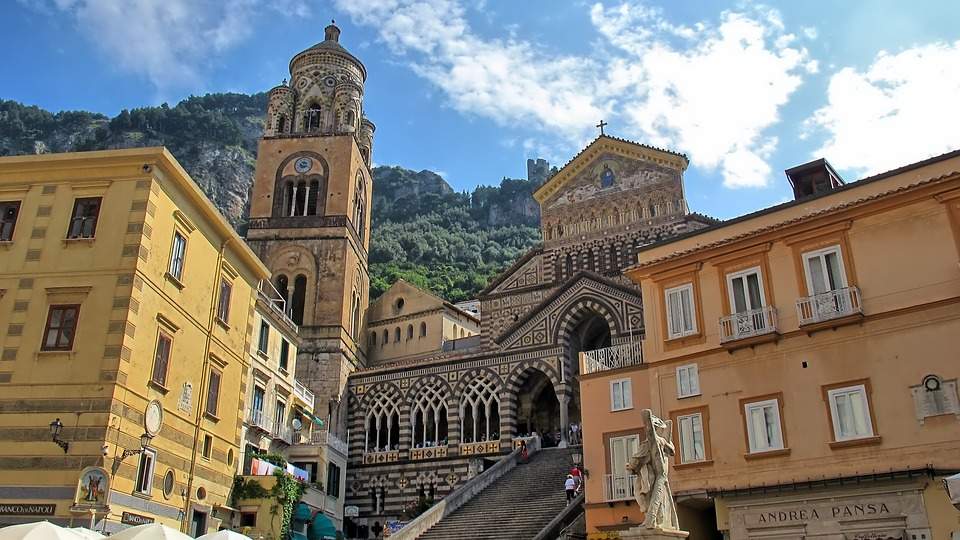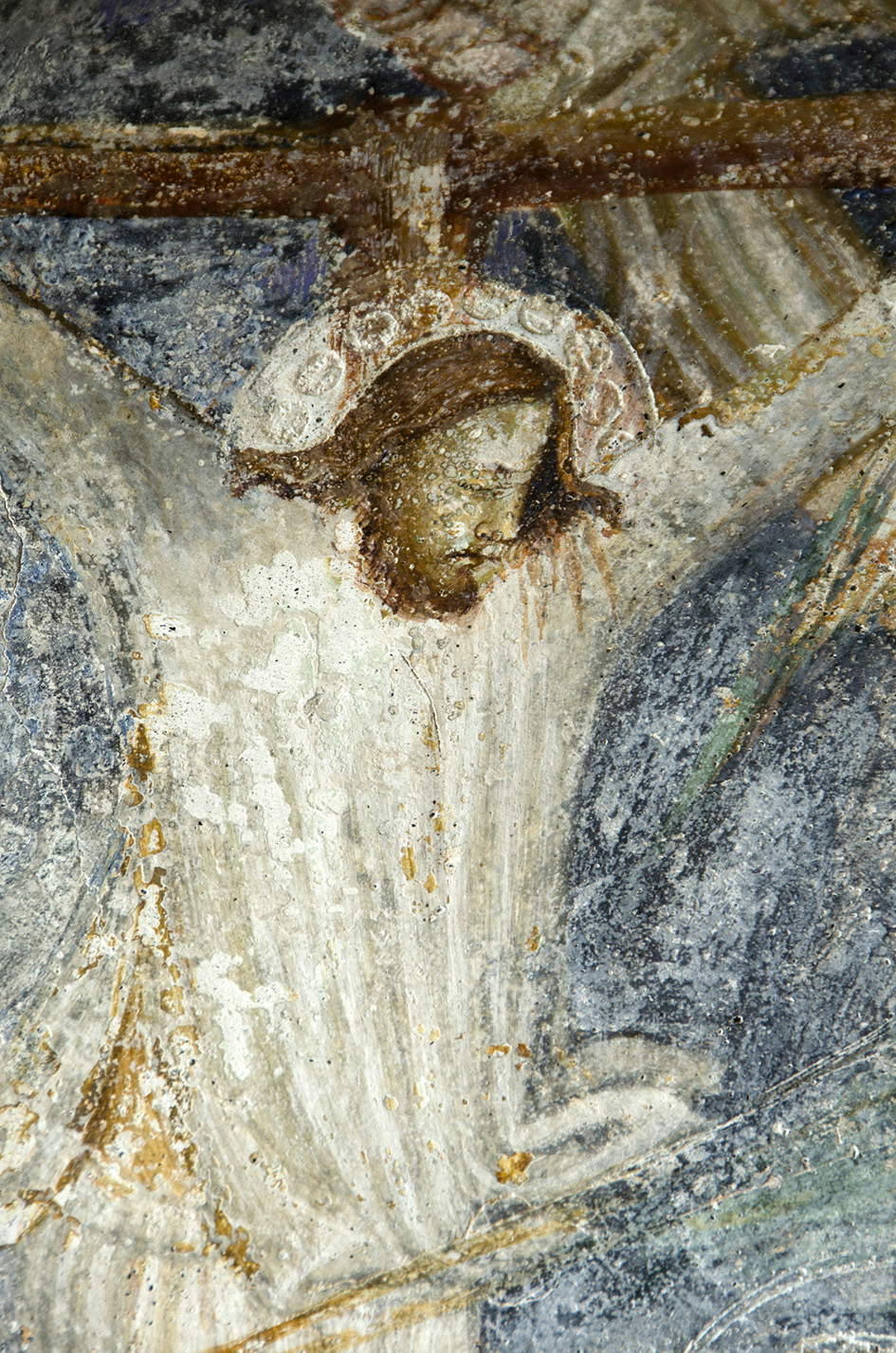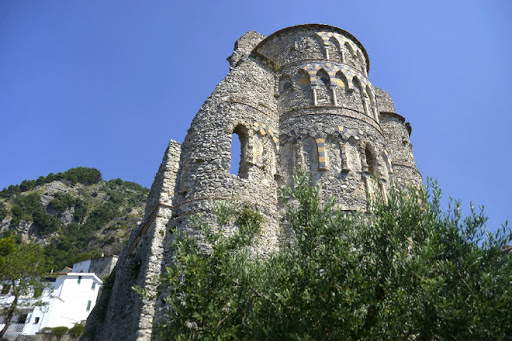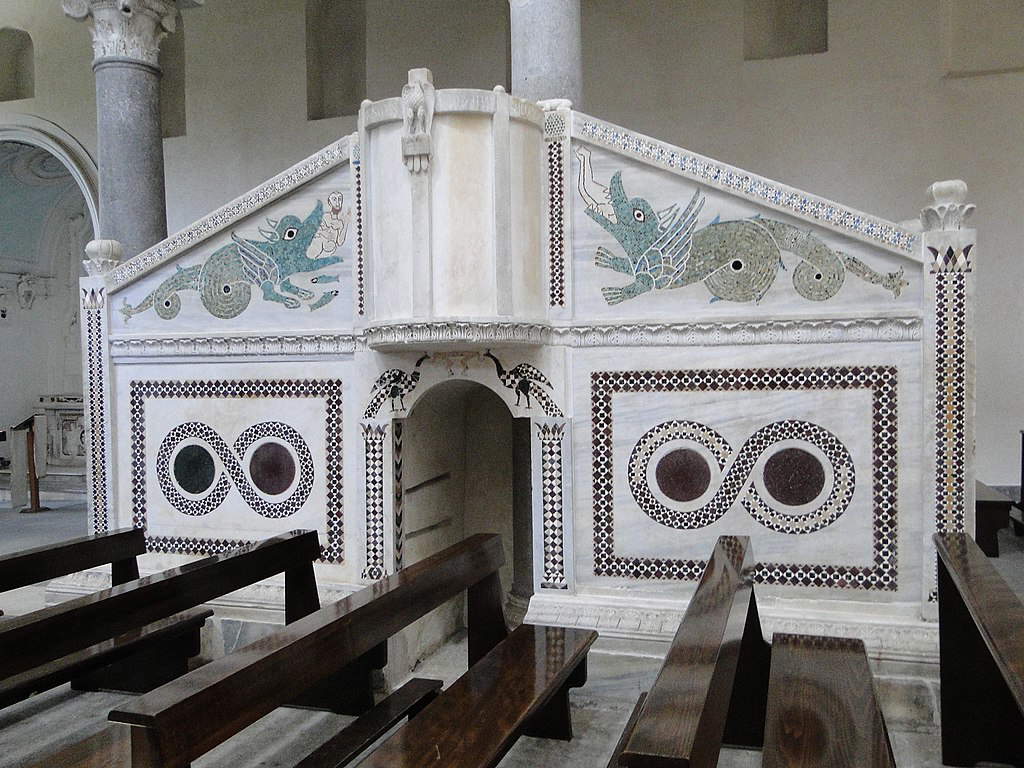The name of Amalfi evokes not only that of the Amalfi Coast with its sea and wonderful sights, but also memories linked to medieval history: the symbol of Amalfi, the octagonal cross on a blue background, is one of the four that stand out on the Navy’s coat of arms precisely because of its past connections to the so-called “maritime republics” (a historiographical term coined in the 19th century, but improper: in ancient times none of the maritime powers of medieval Italy ever called itself a “maritime republic,” and we are talking about a more complex, long and stratified history than that... fixed on the naval coat of arms). What is certain, however, is that Amalfi was for a long time the capital of an independent state, which roughly corresponded to the territory of the Coast.
Just as it is equally certain that, between the 10th and 11th centuries, Amalfi reached the height of its power: first administered according to an oligarchic republican form of government, and then becoming a duchy in 954 (when Count Mastalo II proclaimed himself duke of the city), Amalfi in this period also experienced a flowering of the arts. A flowering that, moreover, continued in later times, when in 1131 the duchy submitted to Roger II of Sicily, losing its independence. Traveling the Amalfi Coast therefore means not only discovering “picturesque” villages and unique landscapes, but also traveling through the art of the Middle Ages. There are several sites to discover: let’s see which ones are unmissable, according to our “five places in two days” format.
The journey can only begin with Amalfi Cathedral, probably the most famous monument in the area. It was built under Duke Mansone I starting in 987, although it obtained its current configuration between the 12th and 13th centuries (the current building, moreover, is the result of the union of two adjacent places of worship). However, the facade is not medieval: it was designed in the 19th century by architect Errico Alvino, who proposed a neo-Moorish facade imagining what the original should look like. However, the bell tower is still the old one: it was built between the 12th and 13th centuries and is recognizable by its flashy polychrome glazes, typical of Romanesque in these areas, inspired by Calabrian-Byzantine styles. Inside, the present church is the result of a long stratification and various interventions and remodeling over the centuries. However, there are still numerous vestiges of the medieval building: for example, the Byzantine bronze door from the 11th century, the marble decorations of the portal, the columns of the triumphal arch. Then again, remains of frescoes from the 14th century (and probably even older in the case of the frescoes decorating the chapels opening onto the cloister), and several sculptures including a marble eagle that was probably part of an ancient ambo.
 |
| The Cathedral of Amalfi |
 |
| Detail of the Crucifixion by Roberto d’Oderisio |
It is perhaps less well known than other towns on the Coast, but it boasts of being the “oldest village on the Amalfi Coast,” as the sign at the entrance to the town reads. It is not on the sea, but remains on the hillside behind Atrani and Minori.Despite its small size, there are many fine monuments in Scala. Start with the Cathedral of San Lorenzo, built in the 11th century but remodeled at length over the centuries (the crypt, however, has remained unchanged: there is a splendid wooden Deposition from the 13th century, one of the most important sculptures of its kind in all of Campania), and continue to the hamlet of Minuta, where you can visit the church of Santissima Annunziata, built on the traces of an early Christian building whose structure it traces, and the scenic ruins of the basilica of Sant’Eustachio, with its apse that still retains part of its colorful decoration.
 |
| The ruins of St. Eustatius. Ph. Discover Atrani |
Ravello is another medieval village (which, like Scala, does not directly overlook the sea), and there are many sights that should be mentioned: however, the Duomo is not to be missed, and although it retains very little of its medieval appearance, inside it houses one of the masterpieces of the entire Italian sculpture of the Middle Ages, namely the pulpit by Nicola di Bartolomeo da Foggia from 1272, with its splendid cosmatesque decorations and the case supported by six columns resting on stylophoric lions. Next to the latter, the Byzantine ambo of 1130, by an unknown author, also deserves a mention: it is the only ambo, in all of Campania, made with the double-scale model, which has Roman origins. The two museums (the Museo dell’Opera del Duomo, located in the crypt of the house of worship, and the Pinacoteca d’Arte Medievale e Moderna, accessed from the left aisle) complete the visit: the former is devoted mainly to sculpture (there is another work by Nicola di Bartolomeo da Foggia, the so-called bust of Sigilgaida Rufolo), while the latter preserves a significant picture gallery, with paintings mostly from the modern period.
 |
| The pulpit of Ravello Cathedral. Ph. Credit Greg Willis |
 |
| The double staircase ambo. Ph. Credit K. Weise |
The abbey complex of Santa Maria de Olearia (which probably owes its name to the many olive trees found in this area of the Amalfi Coast) is located in Maiori and consists of a former convent (now used as a residence) and three houses of worship that are located in a scenic location, on the coast of a hill that rises before the town of Maiori: the abbey is set in a rock cavern. The hermitage dates back to the 10th century and preserves several pictorial cycles (which have survived in fragmentary fashion), including frescoes painted in the 11th century and attributed to a certain Leone Amalfitano, who, according to tradition, was a skilled monk-painter. But there is even older evidence in the complex: the so-called “catacomb,” or the lower portion of the cave, still preserves wall paintings from the 10th century.
 |
| Frescoes in Santa Maria de Olearia. Ph. Credit Maiori Cultura |
 |
| Medieval art masterpieces on the Amalfi Coast: five places in two days |
Warning: the translation into English of the original Italian article was created using automatic tools. We undertake to review all articles, but we do not guarantee the total absence of inaccuracies in the translation due to the program. You can find the original by clicking on the ITA button. If you find any mistake,please contact us.